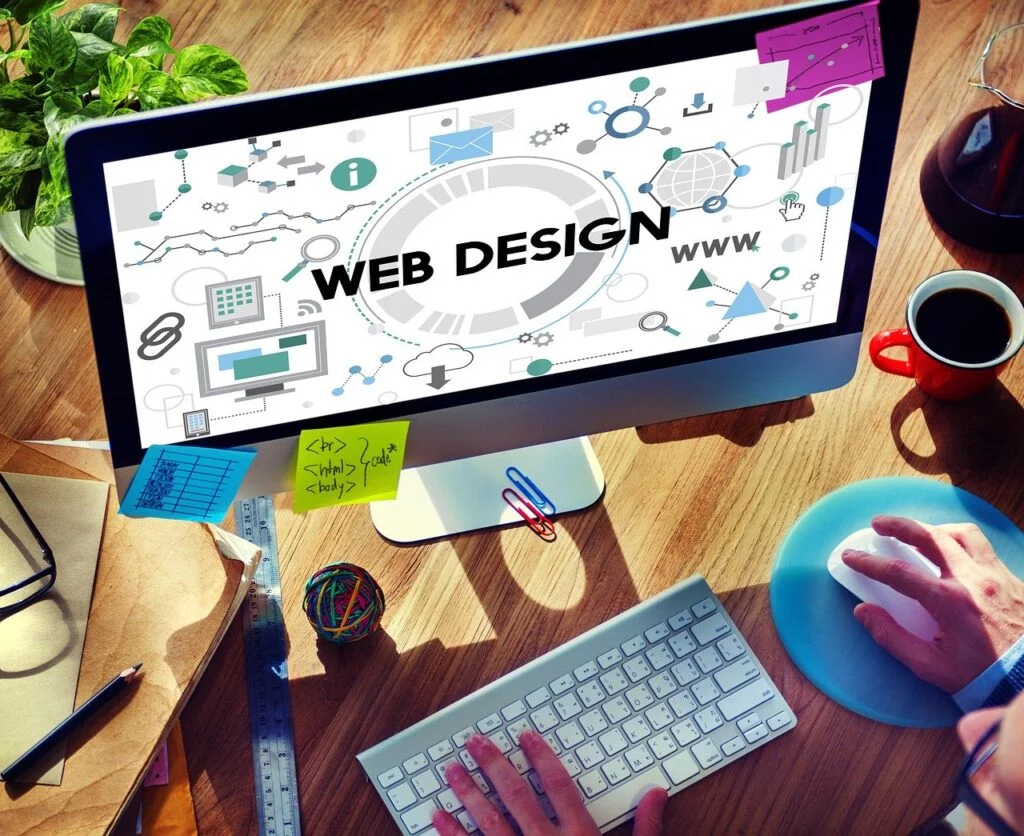Finest Practices for Producing User-Friendly Web Style
In the ever-evolving landscape of website design, developing a straightforward interface is extremely important for engaging target markets and driving conversions. Secret techniques such as simplifying navigating, optimizing for smart phones, and improving loading speed play an important duty in this procedure. The value of consistent style components and prioritizing accessibility can not be overemphasized. As we discover these fundamental principles, it becomes clear that effective individual experience layout not just meets user expectations yet additionally sets the phase for much deeper engagement. Discovering the nuances of each practice can lead to significant enhancements in overall internet performance.
Simplify Navigation
A streamlined navigating system is essential for enhancing customer experience on any type of web site. Efficient navigation enables individuals to discover the info they seek quickly and easily, therefore lowering irritation and raising the probability of engagement. A clear format that categorizes web content rationally is critical; users must without effort understand where to click for specific details.
Utilizing a straightforward high-level navigation bar, enhanced by drop-down menus for subcategories, help in maintaining an arranged structure. It is vital to limit the variety of major navigation links to stay clear of frustrating customers; commonly, 5 to 7 alternatives are optimum. Additionally, using detailed labels improves clarity, making it possible for individuals to discern the web content of each section at a glimpse.
Integrating a search function better enhances the navigating experience, specifically for content-rich internet sites. This function encourages customers to bypass standard navigation courses when seeking details info. In addition, constant design components throughout all web pages enhance experience, enabling customers to browse with self-confidence.
Enhance for Mobile

Firstly, take on a responsive layout technique that automatically readjusts the layout and material based upon the screen size. This flexibility makes sure that users have a consistent experience throughout gadgets. Next, focus on touch-friendly user interfaces by guaranteeing buttons and web links are conveniently clickable, decreasing the need for zooming.
Additionally, consider the value of concise content discussion. Mobile customers typically seek quick details, so employing methods like collapsible food selections or accordions can enhance use without overwhelming the user. Furthermore, ensure that fonts are clear, and picture dimensions are maximized for faster loading.
Finally, examination your internet site on different mobile phones and running systems to determine potential issues. By attending to these aspects, you will produce an instinctive mobile experience that maintains customers engaged and motivates them to discover your offerings better - Web Design Pretoria. Focusing on mobile optimization is vital for attaining an user-friendly website design in a progressively mobile-centric globe
Enhance Loading Speed
Filling rate is an essential factor that can dramatically affect individual contentment and engagement on an internet site. Researches indicate that customers anticipate pages to pack in 2 secs or much less; beyond this threshold, the probability of abandonment enhances considerably. Optimizing loading speed is crucial for maintaining site visitors and boosting general site efficiency.
To improve loading speed, several finest methods ought to be applied. Furthermore, utilize internet browser caching to save duplicates of files locally, making it possible for faster tons times for returning visitors.

Use Constant Style Components
Developing a natural aesthetic identification is essential for improving individual experience on an internet site. Consistent style elements, including color systems, typography, switches, and layout frameworks, create a unified appearance that aids individuals browse easily. When customers experience acquainted patterns and styles, their cognitive load is reduced, enabling them to concentrate on content instead than deciphering differing design facets.
Utilizing a standard shade scheme strengthens brand name acknowledgment and promotes an emotional link with individuals. Similarly, maintaining constant typography-- such as font styles, dimensions, and weights-- ensures readability and adds to a refined appearance. Additionally, uniform button styles and interactive aspects guide customers with ease via the site, improving usability.
In addition, a cohesive layout helps develop an organized flow of info, making it easier for customers to absorb and find web content. Each web page should mirror the same style concepts to stop complication and disorientation.
Prioritize Ease Of Access
A cohesive aesthetic identification not just boosts navigation however likewise sets the phase for prioritizing accessibility in web design. Ease of access guarantees that all users, consisting of those with impairments, can communicate and navigate with a website properly. To achieve this, web designers have to abide by established standards, such as the Web Web Content Availability Guidelines (WCAG)
Applying features like alt text for images, keyboard navigability, and proper color comparison can dramatically enhance the individual experience for individuals with visual, auditory, or cognitive disabilities. It is essential to utilize semantic HTML to framework web content practically, allowing assistive technologies to convey and translate info properly to users.
Furthermore, supplying multiple means of interaction-- websites such as text options for audio and visual material-- can satisfy diverse user requirements. Routine use check my reference screening with participants who have impairments can uncover prospective barriers that might not be instantly obvious during the layout stage.
Inevitably, focusing on availability not just follows lawful requirements yet additionally widens the possible target market, promotes inclusivity, and boosts general site use (Web Design Pretoria). By embedding accessibility right into the layout procedure, programmers can produce a much more equitable electronic landscape for every person
Final Thought

As we explore these fundamental principles, it comes to be clear that reliable customer experience layout not only satisfies customer assumptions yet additionally establishes the stage for much deeper interaction. Mobile customers frequently look for quick info, so utilizing strategies like collapsible menus or accordions can enhance usability without frustrating the user. When users run into acquainted patterns and designs, their cognitive load is minimized, permitting them to focus on material instead than deciphering differing style facets.
In summary, applying finest methods for user-friendly web style considerably enhances the general user experience. Adhering to these guidelines fosters a positive connection between individuals and electronic systems, eventually advertising customer complete satisfaction and retention.